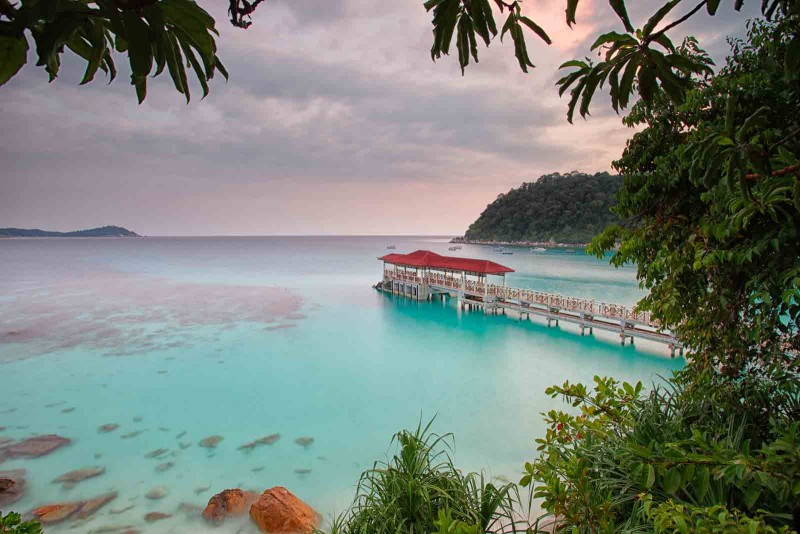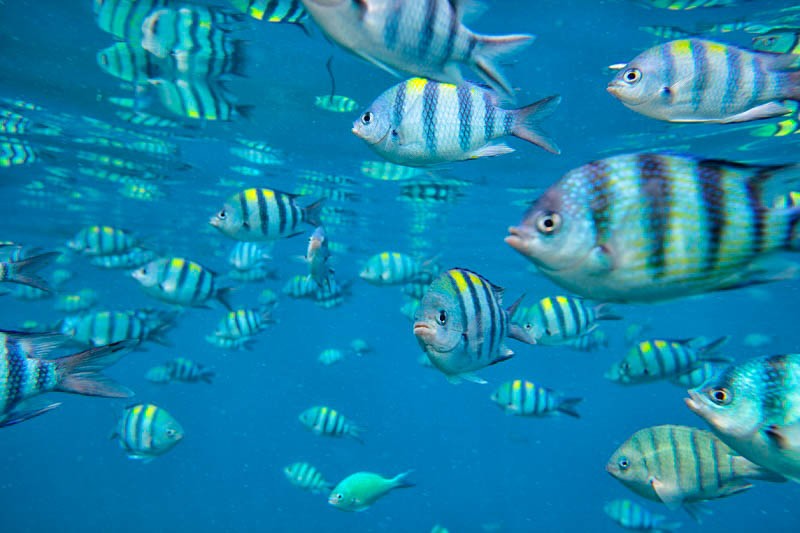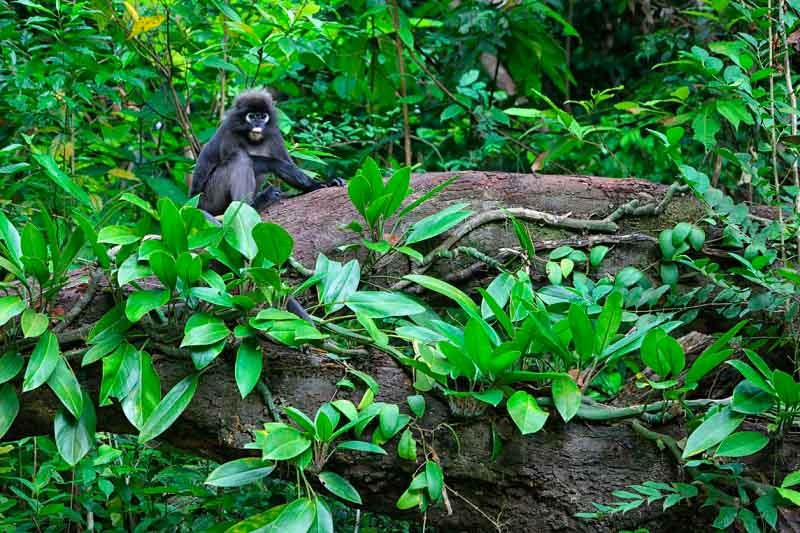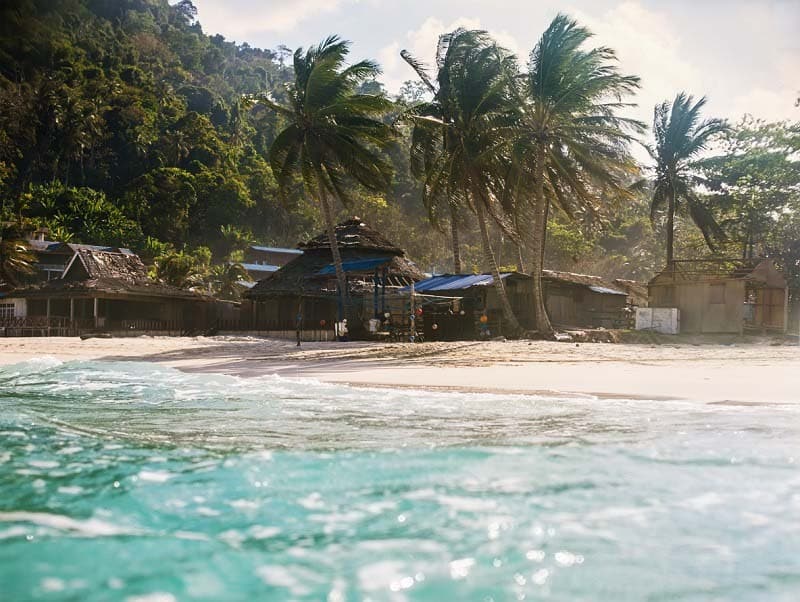Guide to the Perhentian Islands

An oasis for water-sports lovers and just those who want to get off the beaten path, Malaysia’s Perhentian Islands, which translates to ‘place to stop’, lives up to its name. Be prepared to bare your soles and dip your feet into the water or sink your toes in white-sand beaches with our guide to this little known paradise.
If you want white-sand beaches, untouched jungle and water activities galore, put the Perhentian Islands on your itinerary. Focus your travels on the two main islands: the smaller Pulau Perhentian Kecil and the larger Pulau Perhentian Besar.
See and Do
If you love the water, you’ve come to the right place. The Perhentian Islands are a water-sports playground and a scuba divers’ paradise. Go for a swim in the turquoise waters, try your hand at deep-sea fishing or skim the top of the water by going sailing, windsurfing or canoeing.

The Perhentian Islands serve up some of the very best snorkelling and scuba diving in Malaysia, thanks to their prime location on the rim of the Pulau Redang Marine Park, rich with marine life. You’ll find dive operators on both Perhentian Kecil and Perhentian Besar.
Snorkelling excursions range from 1.5 hours to full-day tours.
Among the most popular snorkelling spots are Shark Point, Teluk Pauh and Tanjung Basi. Be sure to keep your eyes peeled for turtles!
If you’re scuba certified, point your flippers towards Tokong Laut (which translates to ‘Temple of the Sea’ and is also known as The Pinnacle) and the Sugar Wreck, the spooky remnants of a sunken freight ship. On your underwater adventure, expect to see a variety of soft and hard corals, turtles, sharks, moray eels, mackerel and more.

If you prefer to holiday on land, you have a handful of options. Stretch out on a beach for some relaxing and sunbathing or, if more active pursuits are up your alley, venture out on a jungle trek along one of a number of trails through the tropical forest, and be sure to keep your eyes peeled for the flora and fauna.
The local residents include monitor lizards, fruit bats, squirrels and long-tailed macaques. (Make sure you bring insect repellent and drinking water.) If you’re really lucky, maybe you’ll catch a glimpse of the ever-elusive mouse deer.
Getting To Perhentian Islands
Getting to the Perhentian Islands takes a bit of doing, but it’s well worth the effort. The islands sit only about 20 kilometres off the coast of Kuala Besut on the east coast of Malaysia, but first, you have to get to Kuala Besut. The nearest airports to Kuala Besut are Kota Bharu, 50 kilometres north, and Kuala Terengganu, 110 kilometres south.
Alternatively, driving to Kuala Besut takes six to seven hours from Kuala Lumpur, six to seven hours from Singapore and about five from Penang. Once you make your way to Kuala Besut, you reach the Perhentian Islands by boat from the local jetty. (You can also charter a boat from the nearby islands of Redang or Lang Tengah).
Conveniently, most boats will take you straight to your accommodation. Less convenient is the fact that the boat trip, which takes anywhere from 30 to 45 minutes, can be a bit rough and wet, so you might want to invest in seasickness tablets and dress accordingly. Also, be aware that you may have to disembark in shallow water – another reason to carefully consider what you wear and how you pack. Boats make the trip a number of times a day, based on demand.
There are no roads on the islands – getting around requires either a sea taxi or your own two feet, so be sure to pack comfy shoes!
Just So You Know…
You’ll want to get cashed up before you go, as there are also no banks or ATMs on the island or even in Kuala Besut, and credit card use is limited at best. Jerteh, about 15 minutes from Kuala Besut, is home to the nearest ATMs and banks.
Where to Stay
If you’re looking for luxury, the Perhentian Islands are probably not the right holiday spot for you this time around. That said, accommodation options here suit all budgets, ranging from camping grounds and backpackers to chalets, guesthouses and relaxed and comfortable resorts.
Perhentian Kecil is ideal for backpackers and those on a budget. This is also where you’ll encounter Perhentian’s only permanent inhabitants, who call a small fishing village home. Look to rest your head here if you want to go easy on your wallet.
If you’re taking your family on holidays or are one of the many who come here to scuba dive, Perhentian Besar is the best choice. At Teluk Pauh, Perhentian Besar’s prettiest and most popular bay, you’ll find Perhentian Island Resort. The beachfront and cosy New Cocohut Chalet is also nearby. For a quieter beach, stay south at Teluk Dalam, with its crescent-shaped beach and smattering of resorts.
[button style=’blue’ icon=”entypo-suitcase” url=’https://www.expedia.com.my/Pulau-Perhentian-Besar-Hotels.d6144981.Travel-Guide-Hotels?rfrr=TG.Destinations.City.Book.Hotels’ fullwidth=’true’] Find Hotels on Pulau Perhentian Besar[/button]
Best Time to Visit the Perhentian Islands
Peak season for the Perhentian Islands is July and August. If you don’t want to get soaked or blown away, it’s best to avoid monsoon season, which runs from November to March every year. In fact, most of the islands’ resorts close from the end of October through February.
Whenever you do go, you can expect pretty consistent (and steamy) temperatures, ranging from 21˚C (70˚F) to 30˚C (90˚F).
Image Credit: Getty Images